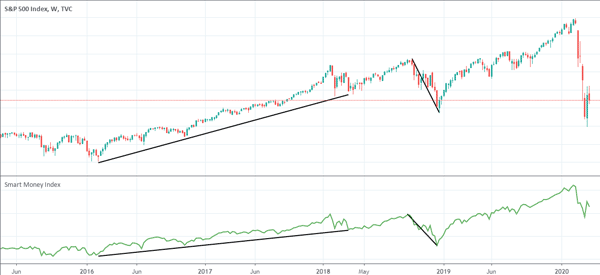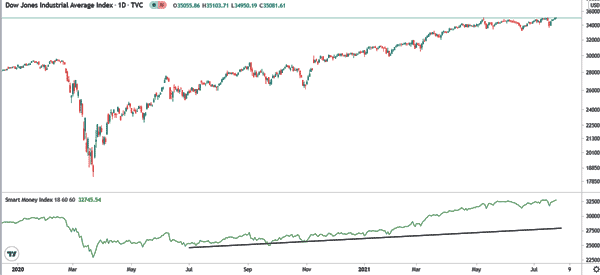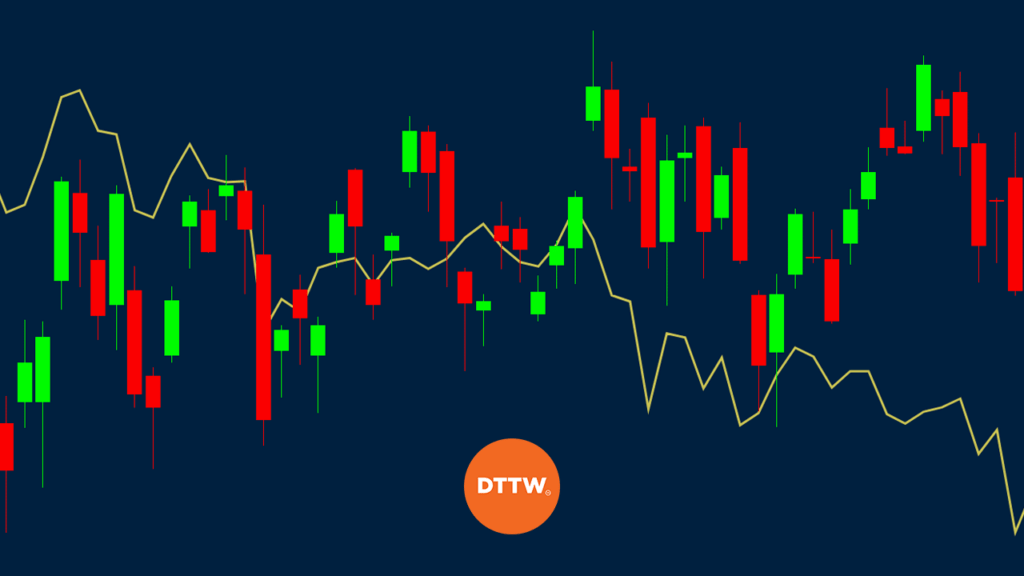There are two main types of traders in the financial market. There are the experienced traders and hedge fund managers, who are also known as the smart money. These traders have decades of experience in the industry, and They know how to spot trends and act as soon as possible.
On the other hand, there are inexperienced or emotional traders who are starting out in the industry. These traders don’t know the tricks in the industry (this is why they are also knows as ‘Dumb Money‘).
As such, they tend to make mistakes such as following the crowd, buying at the top and selling at the bottom.
Table of Contents
What is the Smart Money Flow Index
The smart money index is a technical indicator that was created byDon Hayes in 1990s to help new traders follow the smart money.
The index is used to gauge what the experienced and professional traders are doing. Unlike other indicators like the moving averages and the relative strength index that we have looked at before, the smart money index is not available in most platforms.
Instead, you must find it, download it, and then install it to your trading platform like MetaTrader.
How is it calculated?
The foundation of the indicator is in the stocks industry. The indicator was calculated by using the data in the S&P 500 index. Still, the indicator can be used well even in other financial assets like currencies, commodities, and cryptocurrencies.
Generally, there are three steps for calculating the indicator:
- First, you need to calculate the nominal gain or loss of the asset you are analysing during the first half our of the trading session. If you are analysing stocks, you need to know the exact time when the market opens.
- Second, you calculate the nominal gains or losses during the final hour of the trading session. This should be in the afternoon.
- Finally, you calculate the smart money index by using the following formula: YSMI – FHG/L + MG.
These letters stand for the yesterday’s SMI, while the FHG/L is the first hour gain or loss, while the MG is the market’s gain or loss in the last hour of trading.
Practical Example
Here is a good example. Assume that the YSMI was 2,000 and the asset lost 20 points in the first hour and gained 10 points, the smart money index value will be 2000 – (20) + (+10) = $1,990.
The thinking behind the smart money flow index is that most inexperienced traders trade in the morning as they react to overnight news. Meanwhile, most experienced traders trade in between the market sessions.
As we always say, you don’t need to know how to calculate the index. What is important is for you to know how to interpret it.
How to Trade with the Smart Money Index
Traders use this index in two ways. First, they use it to confirm the trend of an asset. Like most indicators, it does not tell you exactly when to enter in a trade. Instead, it prepares for what to expect in the near term.
For example, if the asset has been moving in an upward trend, the indicator can warn you when the trend wants to change.
Second, they look if the market trends in a different direction than SMI. This is known as identifying a divergence.
For example, if the asset price moves up while the Smart Money Index is moving downwards, it is usually sends a signal that the price could move lower. The chart below shows the indicator at work.

SMI Trading Example
The next example shows the smart money index (SMI) applied on the Dow Jones Industrial Average (DJIA). As you can see, the index keeps rising as the index’s upward momentum remains.

Cons of the SMI index
The idea of an indicator that shows you what the smart money investors are doing sounds good. However, a closer look at the SMI index shows that it is not very useful indicator, especially among day traders who open and close trades within a session.
As shown below, it is common for the indicator to decline sharply as the price rises. Therefore, we recommend that you use indicators that show close buy and sell signals like VWAP and moving averages.

Summary: Does the Smart Money Index Work?
As you can see above, the smart money index is a straight line that mostly moves along the price. Unlike other indicators, the SMI does not send a signal of when to buy or when to short.
Therefore, you should always use the indicator with others like the RSI, momentum, and the Parabolic SAR. Finally, we recommend that you take time to learn and practice with a demo account.
External Useful Resources
- The Problem with the Smart Money Flow Index – The Chart Report
- Smart Money vs Dumb Money? A Quick look at a Unique Sentiment Indicator – Aberleinv.com





